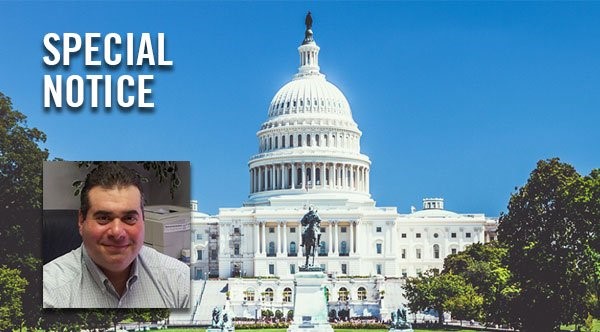
The Subcommittee on Health of the Committee on Energy and Commerce held a hearing on Wednesday, October 30, 2019, at 10 a.m. in the John D. Dingell Room, 2123 of the Rayburn House Office Building. The hearing was entitled, “Safeguarding Pharmaceutical Supply Chains in a Global Economy.”
Edward Price, President & CEO, SEQENS N.A. and member of the Bulk Pharmaceuticals Task Force, an affiliate of SOCMA testified to the committee on the second panel. His full written testimony is provided below.
Written Statement of Proposed Testimony
By Edward Price
President and CEO
SEQENS N.A.
My name is Edward Price, and I’m President and CEO of SEQENS N.A. a fully integrated Pharmaceutical Contract Development and Manufacturing Organization headquartered in Newburyport, MA. Before 2018, SEQENS N.A. was known as PCI Synthesis, a firm I founded in 1998 and sold to SEQENS, which is a global pharmaceutical ingredients manufacturer headquartered in Lyon, France.
My firm is a
developer and manufacturer of active pharmaceutical ingredients (API’s). We operate two sites in Massachusetts and have
130 employees. As a manufacturer of API’s we thus produce THE KEY RAW MATERIAL for our customers for use in any drug product
or therapeutic that they may be looking to bring to market.
We have three main areas of activity:
- The development and supply of clinical API material for further development and for use in clinical trials.
- Commercial manufacture of active ingredients for generic drug products.
- Commercial manufacture of (new chemical entities) NCE’s for therapeutics still covered by patent also known as branded products.
It’s important that it be understood that any drug approved by the FDA is essentially the combination of two things.
- The drug substance which is the active ingredient that has the pharmacological properties to treat the disease or condition of concern.
- The drug product which is the vehicle in which the drug substance is delivered to the body to provide its therapeutic effect. This will be the pill, cream, ointment, injectable, or other delivery mechanism formulated with the drug substance.
These two activities require vastly different skill sets. They require different science and technology, different equipment and very different facilities etc. The reality of today’s pharmaceutical supply chain (especially in generics) is that the overwhelming majority of drug product manufacturers are not drug substance manufacturers and the majority of drug substance manufacturers are not drug product manufacturers. If you add in globalization and the ever increasing trend of outsourcing of both activities by pharmaceutical firms you have an ever increasing intertwined global industry in many countries around the globe. Considering the $1.5 billion of pharmaceutical products consumed in the U.S. daily produced by thousands of fragmented manufacturers around the world the competing goals of reliable supply, safety/high quality products, and low cost are truly not possible in the long term.
The FDA has steadily increased the bar on manufacturers throughout the supply chain most notably over the last ten years. The industry accepts that this is way it is and assumes this will be the case. Pharmaceuticals is a business like any other so increased oversight and regulation increases costs and increasing costs forces business decisions. In the last five years due to consolidation most of the recognized U.S. based independent API manufactures have been acquired by multinational firms. My own firm included. The manufacture of smaller volume products with modest sales volumes are hard to justify to continue when part of large multinational firm. As an independent you have more leeway in which products you can develop.
In the meantime, our clinical supply business is very robust and has grown steadily over the last few years. Due to both perceived as well as published quality issues with overseas suppliers many early stage pharma companies want to work in the U.S. They prefer entities that are regularly inspected, that they can visit easily, and they can work with closely on complex and technologically advanced programs. This ultimately can be more efficient and outweigh any potential savings by using overseas suppliers. The problem is that many of these overseas suppliers are also commercial manufacturers. This is a complicated situation. For the benefit of U.S. patients, we shouldn’t broad brush positively or negatively any particular country or region of the world. Pharmaceutical suppliers should be judged on their own merits after robust inspections and only then should appropriate restrictions be put in place if warranted.
It costs several million dollars to develop a generic drug product and can take a minimum of 3-4 years until approval by the FDA. The marketplace is extremely dynamic and what is potentially an attractive business opportunity today may not be when you get approved. There could be multiple approvals at the same time in the future thus cratering the market. It’s a complex situation and ultimately leads to shortages and safety issues as we see today.
Just this calendar year alone my firm had to contend with the EPA, OSHA, IRS, DEA, and FDA all simultaneously and while trying to run a business. In a number of instances we were dealing with issues brought about by activist agencies critical of operations they had previously approved of, or in another instance changed their interpretations of existing rules, or that “our number came up”. In short we are an overregulated industry and it would be impossible to start my business today like I did in 1998. At the same time I have 10 job openings I cannot fill because we can’t find enough qualified employees.
In a time of crises in overseas countries, or if the U.S. were not to be able to import drug substances or drug products into the U.S. due to some conflict there could be serious shortages for U.S. consumers and dire consequences. There is little redundancy in the system. In short there is an overall lack of manufacturing capacity in the U.S. and the number of qualified workers in pharmaceutical manufacturing is not growing fast enough. When you consider the time it takes for an individual company to develop, file, and get an approval from the FDA many patients could suffer in the meantime if a shortage becomes critical. This is already the case for many small volume, older oncology products. Many of these products are cytotoxic and thus require specialized, capital intensive equipment which adds another layer of complexity to an already complex situation.
What can government do?
- Beyond the FDA, the scope and scale of regulation in my sector is unwarranted, overreaching, and unprecedented in the last 5 years. Common sense needs to be brought back into the system.
- Encourage the FDA to even further expand inspection of overseas facilities to make sure facilities are adhering to GMP’s and only allow into the U.S. products from inspected facilities.
- Target “at-risk products” and sectors of the industry to address existing shortages. Have the FDA partner with companies to develop and make sure there is adequate safe, supply by limiting approvals, giving exclusivities, or expediting reviews.
- Promote STEM education so the industry can have a steady stream of qualified workers here in the U.S.
- State and Federal authorities need to partner with Industry and the FDA to expand capacities and facilities so we can do more manufacturing here in the U.S. and create the business climate to do so.
Respectfully Submitted,
Edward Price
October 28, 2019
Other Witnesses Included:
Janet Woodcock, M.D.
Director, Center for Drug Evaluation and Research
U.S. Food and Drug Administration
Testimony
Michael Wessel
Commissioner
U.S.-China Economic Security Review Commission
Testimony
Panel II
David Gaugh, R.Ph.
Senior Vice President, Sciences and Regulatory Affairs
Association for Accessible Medicines
Testimony
Rosemary Gibson
Senior Advisor
The Hastings Center
Testimony
Ed Price
President and CEO
Seqens CDMO
Categorized in: Active Pharmaceutical Ingredients, Bulk Pharmaceuticals Task Force (BPTF), COVID-19/Coronavirus
